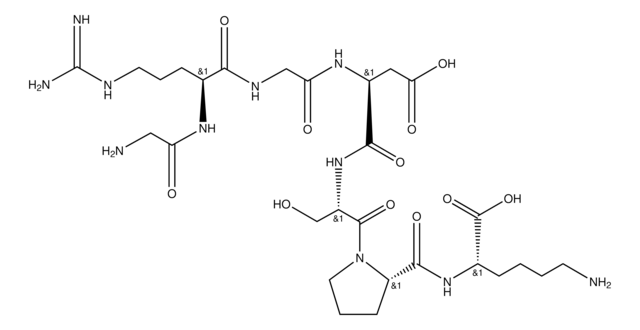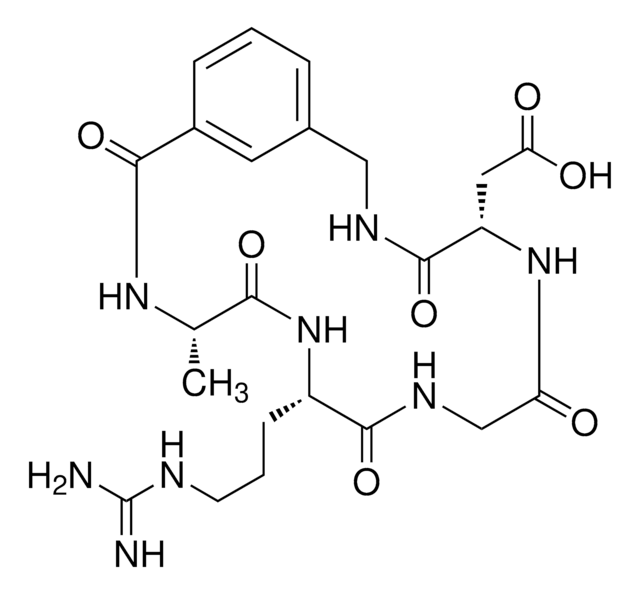TRUERGD
TrueGel3D RGD
Integrin Adhesion Peptide
Synonym(s):
3D cell culture matrix
About This Item
Recommended Products
shipped in
dry ice
storage temp.
−20°C
General description
Application
Features and Benefits
*Doa : 8-amino-3,6-dioxaoctanoic acid
Components
Legal Information
Storage Class Code
10 - Combustible liquids
Certificates of Analysis (COA)
Search for Certificates of Analysis (COA) by entering the products Lot/Batch Number. Lot and Batch Numbers can be found on a product’s label following the words ‘Lot’ or ‘Batch’.
Already Own This Product?
Find documentation for the products that you have recently purchased in the Document Library.
Customers Also Viewed
Articles
TrueGel3D™ synthetic hydrogel can be used to study co-culture of tumor and stromal cells.
TrueGel3D synthetic hydrogel can be used to study cyst formation of MDCK cells.
Fibroblasts that are present in the stroma secrete glycoproteins and polysaccharides to form extracellular matrix. They maintain the structural integrity within the connective tissue and play a key role in cancer, chronic obstructive pulmonary diseases, idiopathic pulmonary fibrosis, scleroderma and several other diseases.
TrueGel3D hydrogels kits for 3D cell culture troubleshooting guide
Protocols
TrueGel3D™ is a chemically-defined hydrogel formed by mixing polymers with crosslinkers. This hydrogel permits the encapsulation of cells to put them in a three-dimensional environment to better mimic the native tissue environment.
TrueGel3D™ is chemically defined hydrogel, enables cell growth in 3D environment and mimics native tissue environment. Slow gelation facilitates filling of microchannels or syringes. Find detail protocol of slow gelation for TrueGel3D™ kits
Related Content
An advanced protocol is available for TrueGel 3D kits for 3D cell culture for peptides concentration or stiffness optimisation
Our team of scientists has experience in all areas of research including Life Science, Material Science, Chemical Synthesis, Chromatography, Analytical and many others.
Contact Technical Service









